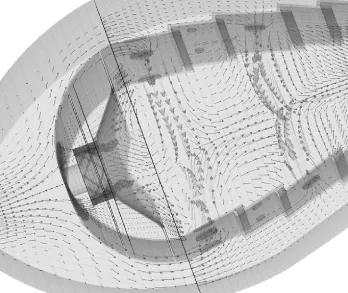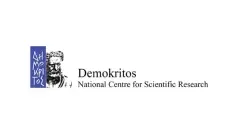ANSWER® is a general-purpose Computational Fluid Dynamics (CFD) solver developed by Analytic and Computational Research Inc. (ACRi). It provides a wide range of models for the solution of the Navier-Stokes and general transport equations, including chemical reactions, combustion, and turbulence. The software is widely used by a large number of commercial, academic, and research organizations in several countries.
ANSWER® has been in continuous use and development since 1970, making it a highly mature and well-validated Navier-Stokes solver. The software employs the well-developed and proven finite volume technique to solve the governing equations for fluid flow, heat transfer, and other passive/reacting scalar transport processes.
"Discover the powerful Key Features of ANSWER® and explore its Application Areas to see how it applies to your industry."
General Features:
- ANSWER® is highly modular and offers a versatile interface for users, providing a platform to quickly experiment with new physical models, numerical schemes, matrix solvers, and more. Some of its key features include:
- Exclusive Use of CFDStudio™, a new integrated development environment for ANSWER®, which significantly shortens the learning curve.
- A powerful yet simple, English-like FREEFORM™ interface, allowing users to define complex problems with just a few simple commands.
- The ability for users to define new field variables with arbitrary names on the fly, without writing a single line of code.
- Users can solve an arbitrary number of new transport equations with user-defined properties, sources, and boundary conditions, all without needing to write code.
- The ability to implement arbitrary multi-step kinetics without any coding requirements.
- Users can define arbitrary and complex functions for sources, boundary conditions, field variables, and fluid and matrix properties using simple English-like commands.
- ANSWER® provides a wide variety of physical sub-models for turbulence and combustion.
- ANSWER® offers alternative numerical methods and matrix solvers to suit various simulation needs.
- ANSWER® is highly modular and can seamlessly integrate external solvers, numerical methods, and problem-specific algorithm
Physics and Computational Features for the Detail-Oriented:
Among the notable features are:
- Gridless Computing (2D only, with 3D under development).
- Support for Voronoi Mesh
- Extended Support for Hybrid Elements, including prisms, pyramids, tetrahedra, and hexahedra (3D), as well as triangles and quads (2D). Any combination of these elements is acceptable.
- Adaptive Gridding/Auto Refinement, enabling grid adjustments at runtime based on specific criteria.
- If-Then-Else Conditional Statements, enhancing problem definition flexibility.
- Improved Matrix Solution Control, allowing for greater computational efficiency.
- Enhanced Interpolation Techniques, ensuring better accuracy in value computation at faces.
A wide variety of physical models are already implemented in ANSWER®.
- Transient or Steady state
- Compressible or Incompressible fluid
-
Turbulence Models
-
Near wall models
- Launder-Sharma
- Chien
- So-Sarkar
- Yeang-Shih
- Standard k-ε
- k-ε with RNG
- Non-linear Quadratic k-ε (Lumley-Shih)
- Non-linear Cubic k-ε (Lumley-Shih)
- Differential RSM (Craft-Ince-Launder)
- LES (Implemented by UCLA/Northrop)
- Wilcox's k-ω
- Mentor's blended k-ε-ω
-
Near wall models
-
Combustion models:
- 1,2,3 and 4-Step Hydrocarbon Model
- 3 or 5-Step Univ. of Washington Hydrocarbon Model
- User-defined multi-step multi-species reaction systems with/without turbulence limiting
- Arbitrary 1st, 2nd or 3rd order Arrhenius Kinetics with or without EBU/turbulent limiting
- Fast-Chemistry assumed PDF
- Flamelet (Implemented by Prof. Candel for SMECMA)
- Mass Transport with Unlimited number of Species
-
Sources:
- Direct, Mass Injection, Solubility Limited, Radiation or Arrhenius Kinetics
- Sources that are functions of surface area or volume
- Functions of time, space or any dependent or user-defined variable
- Any number and mix of sources for any variable
- Boundary Conditions: Dirichlet, Neuman, Radiation and other derived types
-
Heat Transfer:
- Conjugate heat transfer with embedded solids
- Sub-models for Spray, Radiation, Regeneration and other physical phenomena
- Built-in six-flux radiation model
- Interface with heat ordinate radiation model
-
Geometry:
- Structured or Unstructured Meshes or Voronoi Meshes
- Arbitrary quadrilateral or Hexahedral control volumes
- Specialized 2D and/or Cylindrical modes
- Specialized 2D Cylindrical mode with a third swirl velocity component
- Built-in geometry and meshing for geometrically and topologically simple problems
ANSWER® is developed for solution of the Navier-Stokes, the Boundary Layer and the Convective Transport equations including chemical reactions, combustion and turbulence.
Typical application areas of ANSWER® include:
GENERAL APPLICATIONS
- Submerged Body Shape Optimization
- Acoustic Signal Optimization
- Flow in Centrifugal Pumps
- Ventilation of Toxic Fumes
- HVAC Design Optimization
- Lubrication of Bearings
- Water Flume and Tunnel Design
- Flow in Pipes with Steps and Obstructions
- Flow in Diffusers
- Recirculating Flows in Solid Body Rotation
- Swirling Flow in Pipes and Annuli
- Boundary Layer and Free Jet Flow
- Mixing of Jets
PROCESS INDUSTRY
- Pachuca Process Tank Design
- Flow in Pipes, Ducts and Bends
- Flow Past Orifices and Obstacles
- Heat Transfer Augmentation
- Mixing Enhancement with Swirling Flows
- Boiler Design & Performance Analysis
- Non-Newtonian Flow in Reactor Vessels
AEROSPACE & DEFENSE
- Ramjet Performance and Design Analysis
- Aircraft Engine Performance Analysis
- Afterburner Analysis
- Fuel Nozzle Design Optimization
- Turbo-jet Diffuser Design
- Aerofoil Analysis
- Rocket Exhaust Flow Analysis
- Missile Drag, Lift and Flight Performance
- Torpedo Launch Tube Analysis
AUTOMOTIVE
- Flow Distribution Around an Automobile Body
- Aerodynamic Drag Analysis
- Interior Ventilation and Air Distribution
- Clutch Performance Analysis
ELECTRONICS
- CVD Reactor Analysis
- Component Cooling & Placement Design
- Plasma Etch Reactor Design
- Potential Distribution in Components
- Submerged Microscopic Impurities
- Low Pressure Film Deposition
























